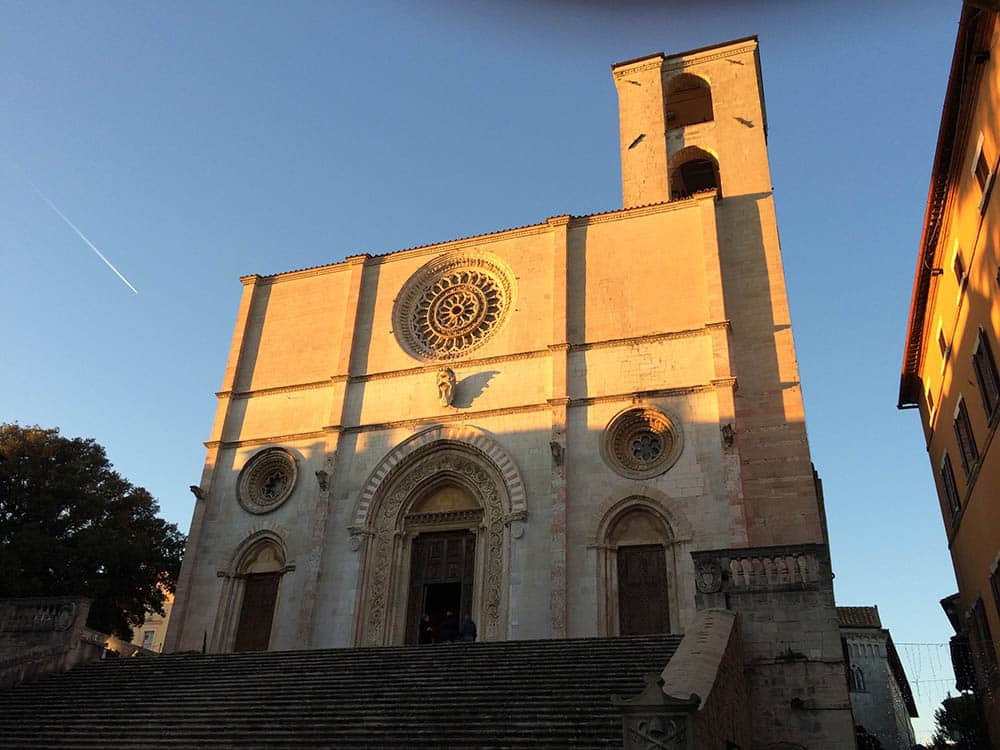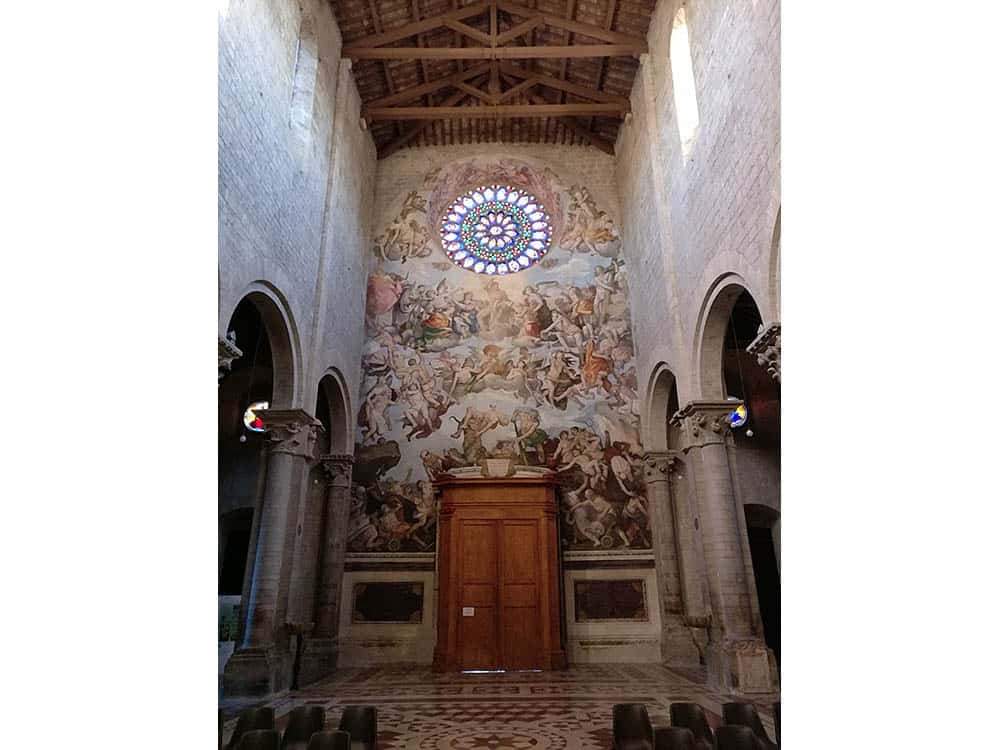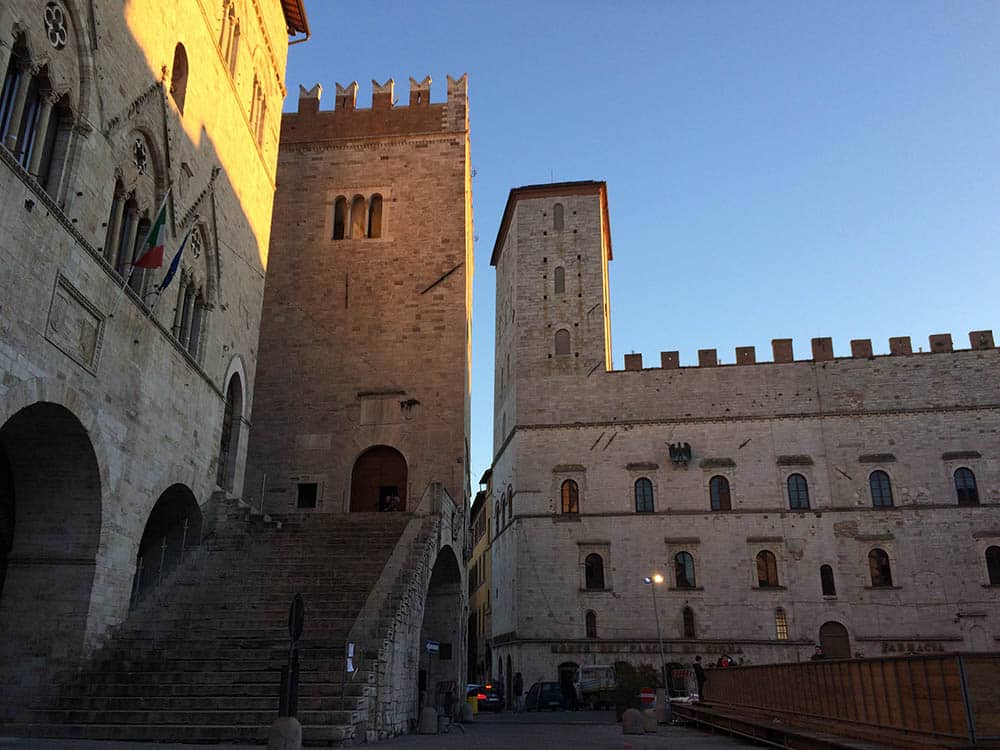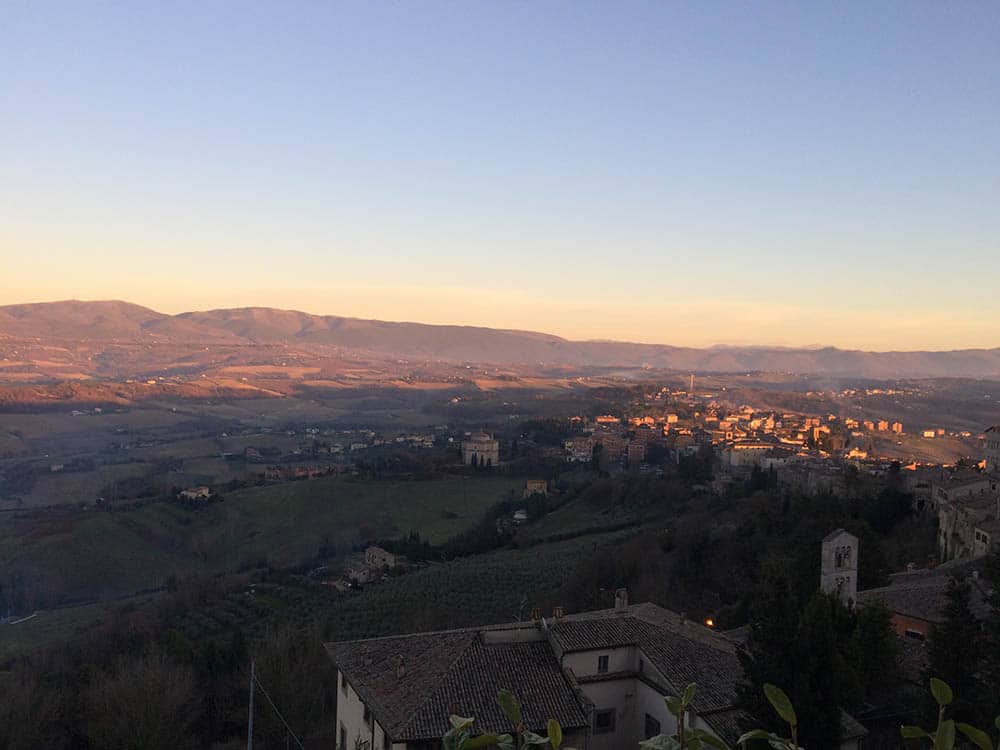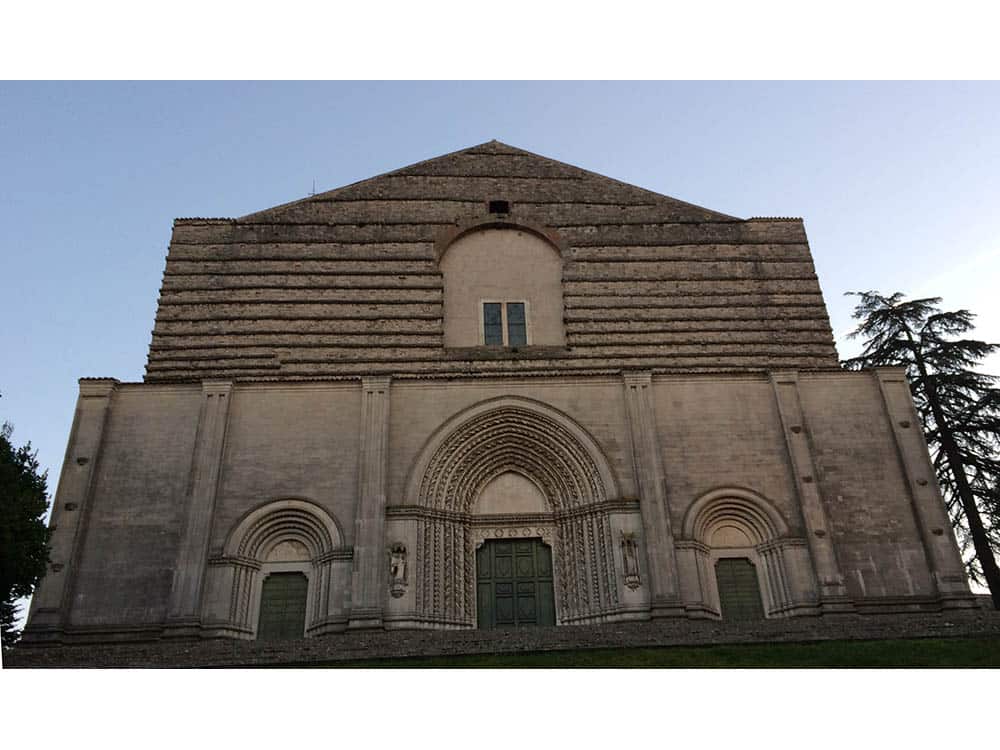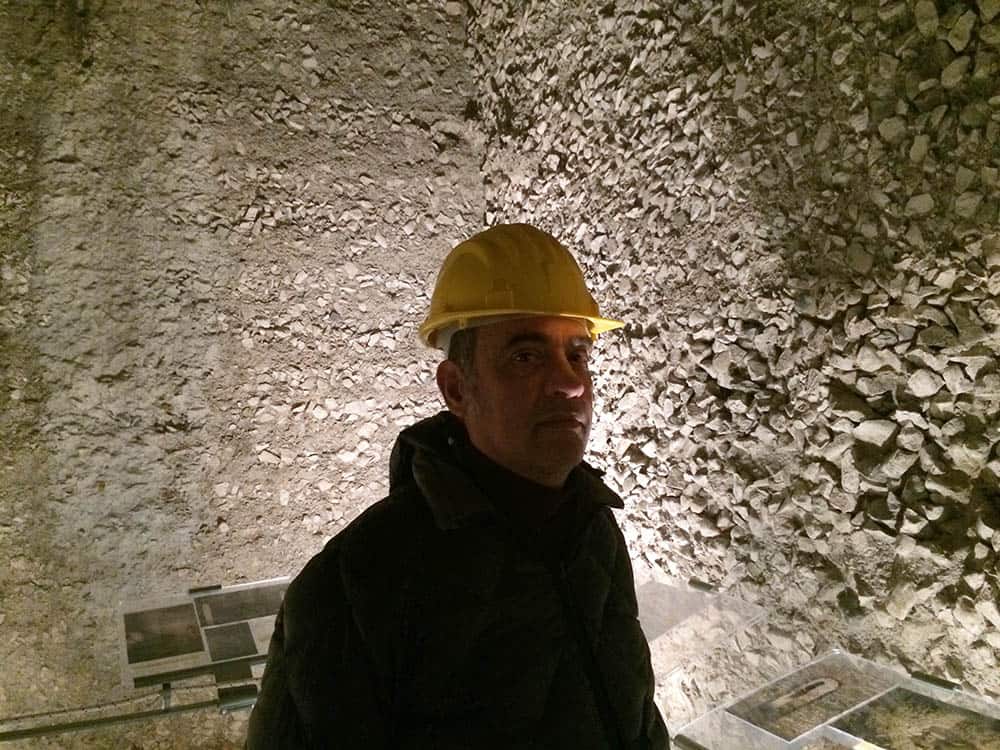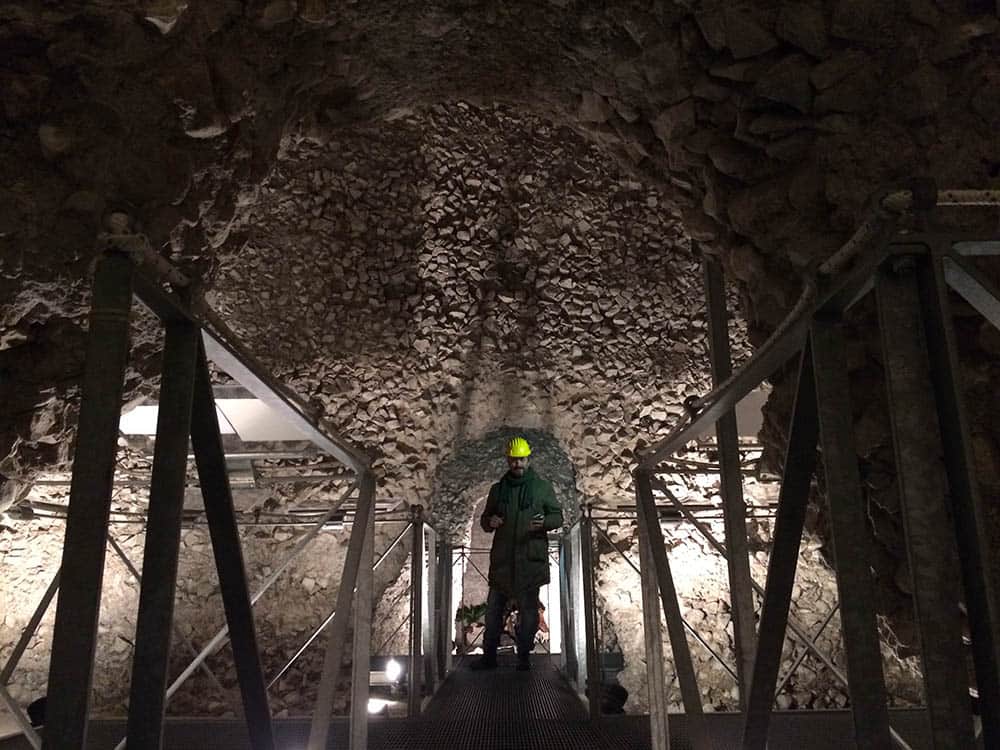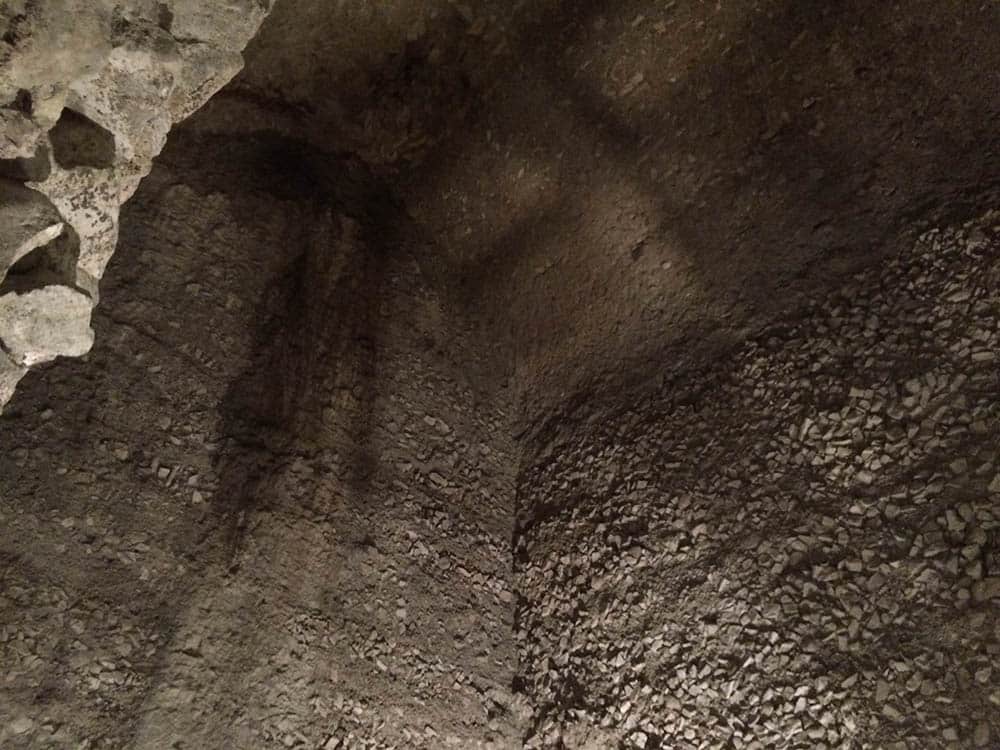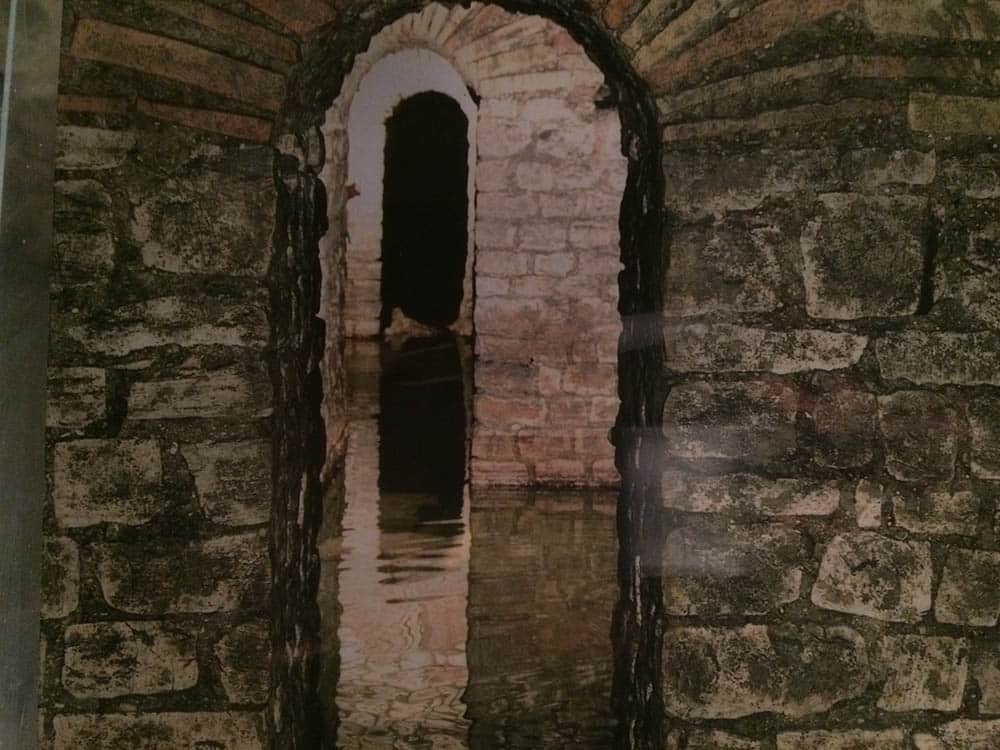Our Christmas holiday this year takes us to the center of Italy, right in the heart of Umbria. While we were in Camogli we received a super pleasant invitation from our friends who live in Rome. Paola and Renato have a beautiful house in the countryside with a breathtaking view of the valley.
The day after our arrival they take us to Todi, a village close by (about an hour and a half drive from Rome).
Todi has a 2500 year history to be proud of and it shows the layers of its far away origins. Founded as an Etruscan-Roman site (its name comes from the word Tutere, which means “border town”: in fact in the past it divided the kingdom of the Etruscan from the territory of Rome) in the course of the centuries changed its topography to adapt to the new inhabitants and dominators to reach the medieval structure that we can see today.
The legend says the town was originally planned to be built in the valley where the Tevere river flows but an eagle stole the cloth on which the ancient founders were having lunch and dropped it on the top of the nearby hill which was considered an inescapable sign that influenced the decision of building the new city up there.
Most probably the choice was due to the common necessity of having a 360° view of the surrounding and to be less reachable by the enemies and invaders.
Anyway, Todi is still protected by its original medieval walls that keep the town strongly isolated from the sometimes infesting modern architecture and from the feared new conquerors: mass tourism.
The town’s central arrangement reproduces the one that, in a bigger scale, you can appreciate in Perugia: a central street that leads to a wide square, piazza del Popolo, where all the most powerful authorities of the time made sure to have a first-row exposure for their activities.
The first one that captures our eyes is, of course, the Duomo dell’Annunziata. Built between the XII and XIV century in Romanesque-Gothic style, it is one of the most important churches in Umbria. We suggest that you climb the stairs that lead you to the entrance and have a look to the opposite wall where there is a wide fresco by Ferraù from Faenza, inspired by Michelangelo’s The Last Judgment (I’m aware of the fact that visiting Italy means a continuous in and out from church to church but at the end that’s part of the deal!). If you have time visit the crypt and its museum.
The other main buildings are the Palazzo del Capitano, in the Gothic style, which today houses the Municipal Art Gallery and the Etruscan-Roman Museum; the Palazzo del Popolo with an exceptional arcade with lowered arches and the beautiful battlements; the Palazzo dei Priori, right in front of the Duomo, with the eagle to represent the ancient coat of arms of the city.
Many other churches and construction make Todi a key destination for those visiting Umbria but in my opinion a fascinating detail about this old town is definitely its hidden heritage: a net of more than 5 km of tunnels and galleries, that includes 30 tanks and 500 wells that represented an extremely efficient water system that runs below the main square, Piazza del Popolo.
As everybody knows the Etruscans and Romans were skillful builders with a strong obsession for water disposal: everywhere they went they made sure to have their running water!
In the map below you can appreciate the vastness of this hydraulic project that guaranteed to the population, in the case of siege, the essential water supply.
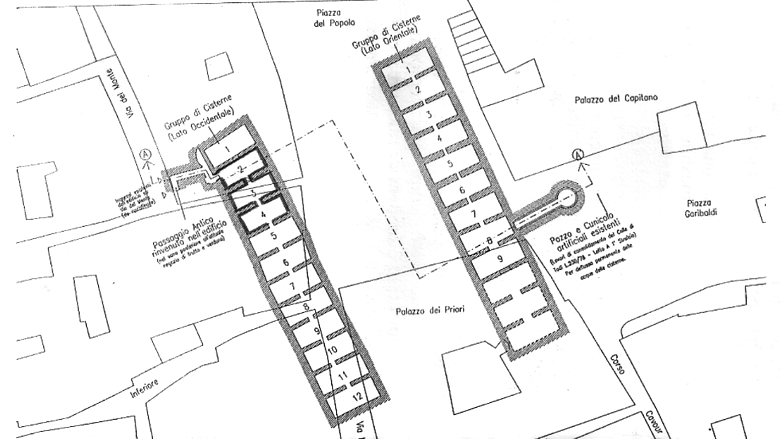
In the town of Todi archaeologists and speleologists have worked together to bring forth a complex system of underground architecture that covers the hillside inside and wisely takes advantage of the geomorphological characteristics of the soil: the spring waters and rainfall infiltration, channeled in the tunnels, limited the erosion of the highly unstable soil while gathering in wells and cisterns all the waters needed for the population necessities.
Our country, devastated by erosion and landslides, seems to ignore the lesson that we can still learn from our predecessors through their grandiose works, that seemed to know better than us both the indispensability and the terrifying power of water.
By the way, Todi has been mentioned by Richard S. Levine of the U.S. Kentucky University as one of the most pleasant places to live around the world. Give that a consideration.
Betti
[socialWarfare]

